Wave Energy Systems
Welcome to the world of Wave Energy Systems! This will guide you through the technology, applications, and the sustainable power generation potential of harnessing the energy from ocean waves. Get ready to embark on your wave energy systems learning journey!
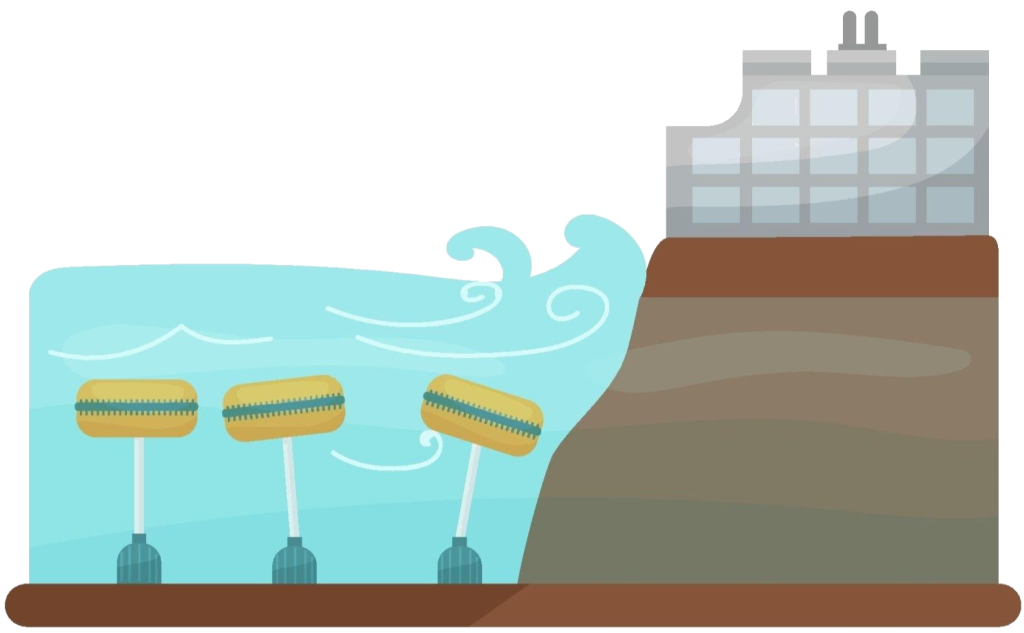
Topic Orientation
Introduction to Wave Energy
Wave energy is a renewable energy source derived from the movement of the ocean’s waves. It has the potential to generate electricity and contribute to sustainable power generation.
Types of Wave Energy Converters
There are various types of wave energy converters, including point absorbers, oscillating water columns, and overtopping devices. These technologies capture wave energy in different ways and have specific advantages and limitations.
Environmental Impact
Implementing wave energy systems can have environmental implications, such as impacts on marine ecosystems and coastal areas. It is crucial to conduct thorough environmental assessments and mitigation measures.
Challenges and Prospects
While wave energy holds promise, it faces challenges like technological development, cost-effectiveness, and energy grid integration. However, research and innovation are driving the industry towards a sustainable future.
Advantages of Wave Energy
Wave energy has several key advantages. It provides a consistent and predictable energy source due to the reliable nature of ocean waves. It’s also eco-friendly, with minimal environmental impact. Wave energy systems enhance energy security by diversifying sources and are adaptable to varying energy needs.
Wave Energy Policy and Regulation
Government policies and regulations drive wave energy development. They include incentives and environmental standards to minimize the impact. Policy frameworks ensure grid integration and research funding spurs innovation in wave energy tech and industry growth.
Future Outlook for Wave Energy
Wave Energy’s future is promising. Ongoing R&D is boosting converter efficiency, and increasing competitiveness. It attracts investments and expands geographically. It can complement other renewables and ensure a stable power supply. Wave energy holds great potential.
Application Tool
Step 1: Wave Energy Density
Wave energy density is a measure of the energy contained in ocean waves. Select the parameters to calculate it:
Step 2: Wave Power
Wave power represents the power extracted from ocean waves. Choose the parameters for calculation:
Step 3: OWC Chamber Power
OWC chamber power represents the power extracted from an oscillating water column chamber. Select the parameters for calculation:
Step 4: Point Absorber Power
Point absorber power represents the power extracted from a point absorber wave energy converter. Choose the parameters for calculation:
Step 5: Overtopping Device Power
Overtopping device power represents the power extracted from an overtopping device wave energy converter. Select the parameters for calculation:
Step 6: Overall Output
This step provides a summary of the estimated performance of the wave energy system based on the calculations from previous steps.
Case Studies
Mutriku Wave Power Plant, Spain
The Mutriku Wave Power Plant is a commercial wave energy power plant located in the Basque Country, Spain. It has a capacity of 2 MW and was commissioned in 2011. The plant uses Oscillating Water Column (OWC) technology, which converts the energy of ocean waves into electricity by capturing the movement of air in a chamber.
The plant has been operating successfully for over a decade and has generated over 100 GWh of electricity. It has also helped to reduce Spain’s reliance on fossil fuels and greenhouse gas emissions.
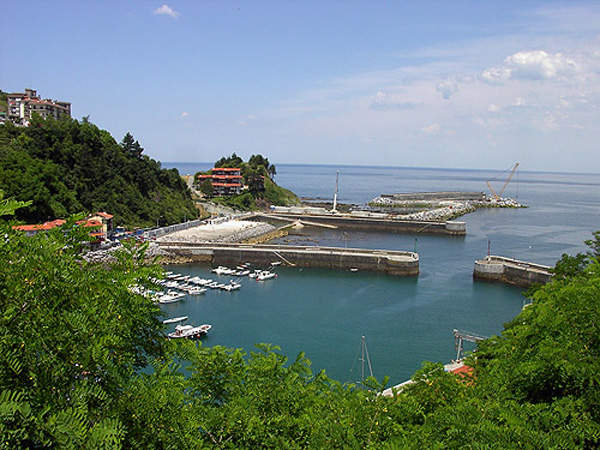
Pico Pico Wave Power Plant, Portugal
The Pico Pico Wave Power Plant is a wave energy pilot plant located on the island of Pico, Portugal. It has a capacity of 0.25 MW and was commissioned in 2010. The plant uses Pelamis technology, which consists of a series of articulated segments that float on the surface of the water and move in response to ocean waves.
The Pelamis segments are connected to a generator, which converts the energy of the moving segments into electricity. The plant has been operating successfully for over a decade and has generated over 1 GWh of electricity. It has also helped to reduce Portugal’s reliance on fossil fuels and greenhouse gas emissions.
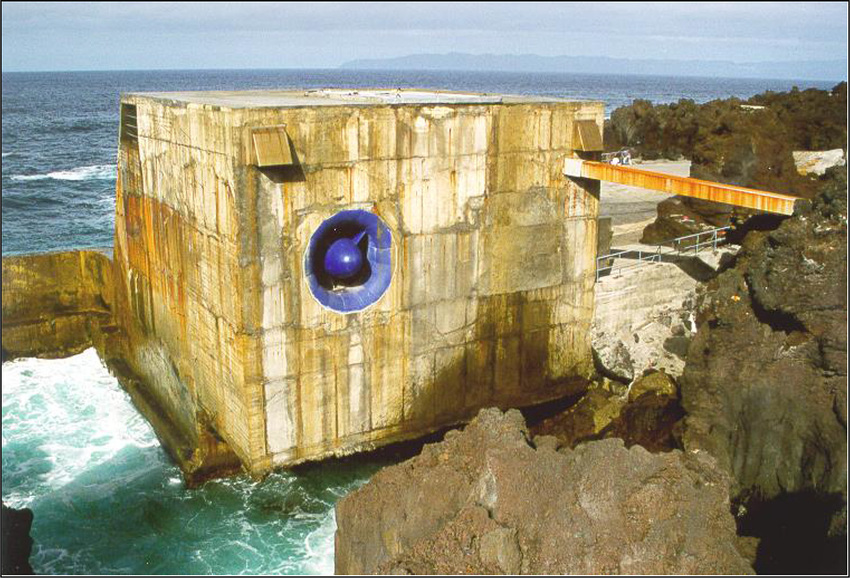
Wave Dragon Pilot Plant, Denmark
The Wave Dragon Pilot Plant is a wave energy pilot plant located off the coast of Denmark. It has a capacity of 1 MW and was commissioned in 2013. The plant uses Wave Dragon technology, which consists of a large floating structure that moves in response to ocean waves.
The Wave Dragon structure is connected to a generator, which converts the energy of the moving structure into electricity. The plant has been operating successfully for a number of years and has generated over 1 GWh of electricity.
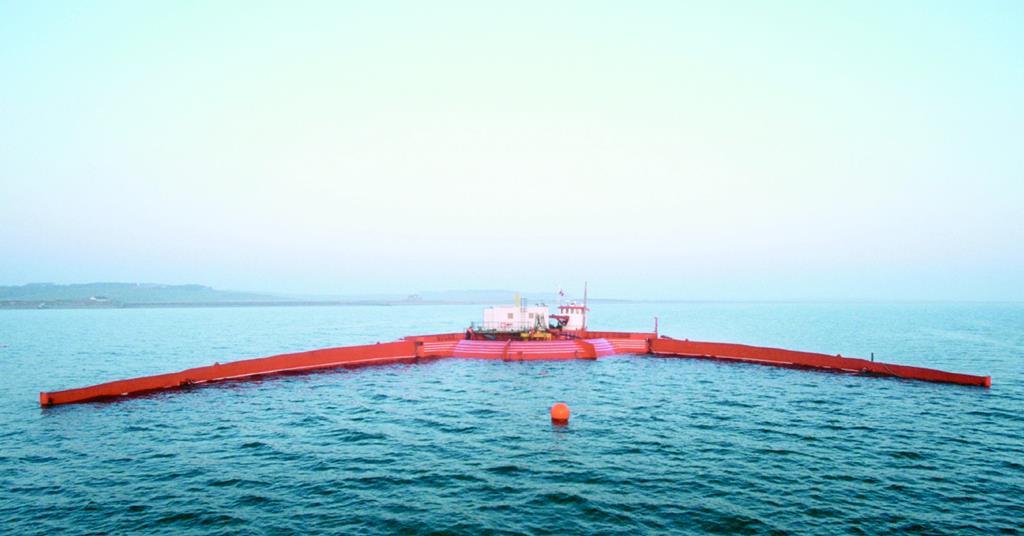
Visuals
Informative Visuals of Wave Energy Systems.
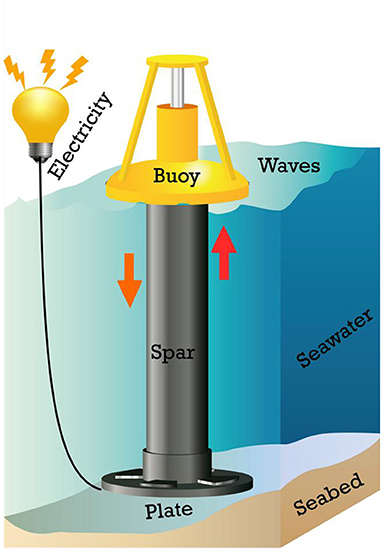
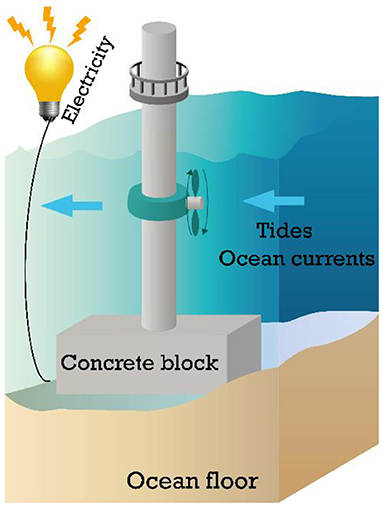
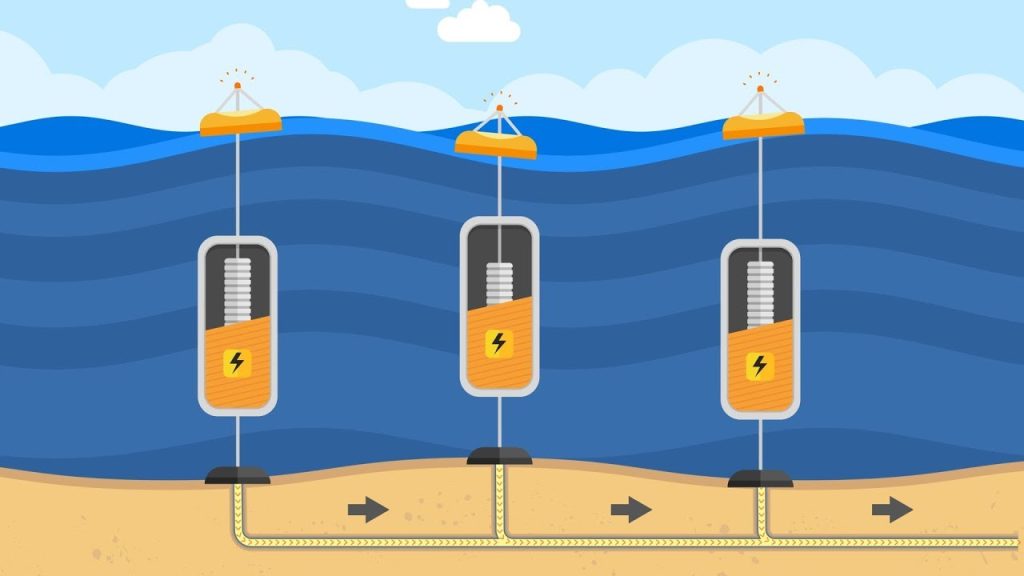
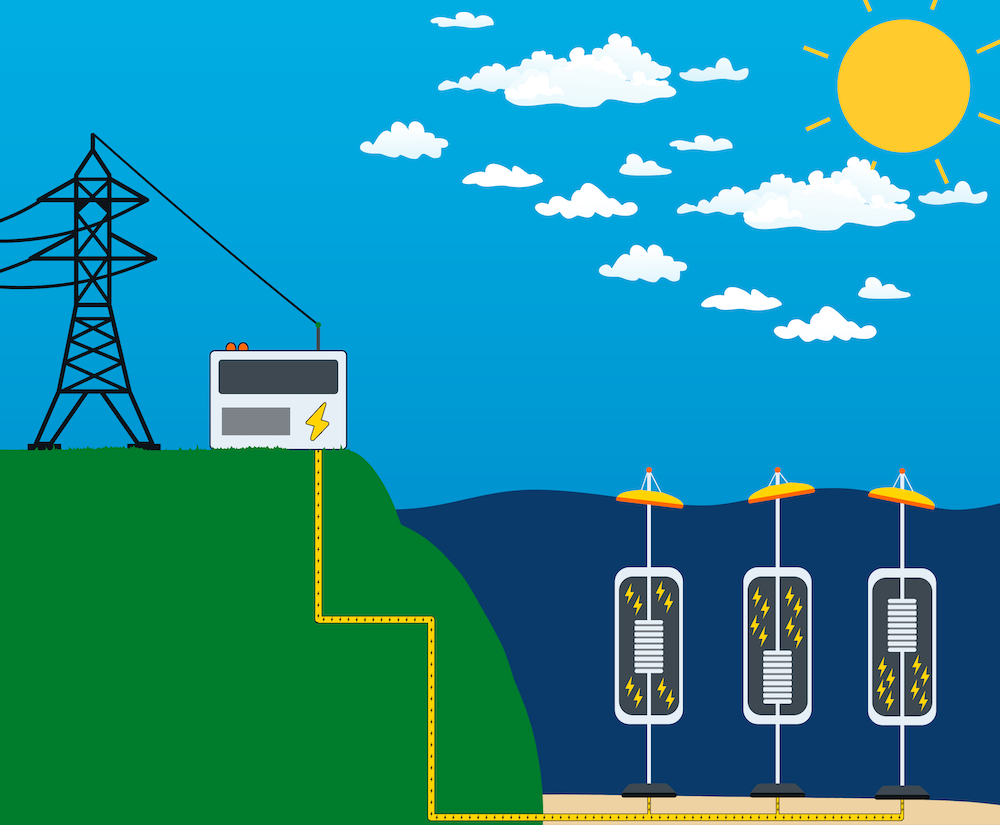
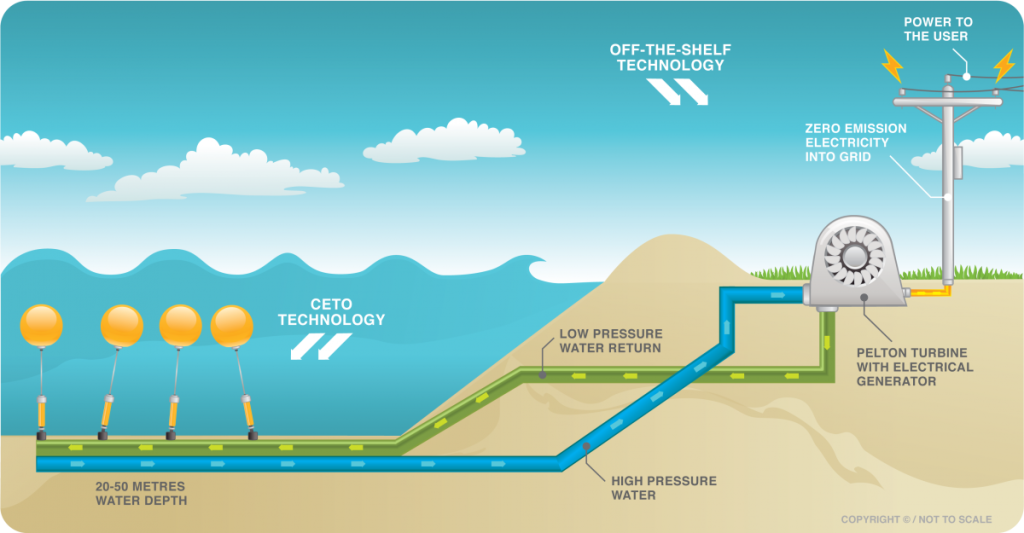
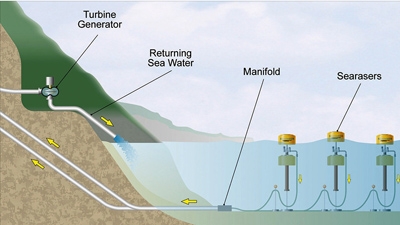
References
Here are some credible references discussing the subject of wave energy systems.
| Resource Title | Source |
|---|---|
| Wave Energy Conversion: A Review of the Current State of the Art and Future Prospects | ResearchGate |
| Wave Energy Technology: Current State and Future Prospects | NREL |
| Wave Energy Systems: Advances in Design, Modeling, and Control | ScienceDirect |
| Wave Energy Conversion Systems: Principles and Applications | Amazon |
| Ocean Wave Energy: Current Status and Future Prospects | Springer |
| Wave Energy: A Review and Potential for Commercialization | ResearchGate |
| Wave Energy Conversion Systems: A Review of the State of the Art | ScienceDirect |
| Wave Energy Conversion: A Review of the Technology | ResearchGate |
| Wave Energy | CoastalWiki |
| Wave Energy | Wikipedia |
Equations
Here is a list of credible equations used in ocean wave energy systems:
- Wave energy density: This equation calculates the amount of energy per unit area contained in ocean waves.
Wave energy density = ρgHm^2 / 2- ρ is the density of water (1000 kg/m^3)
- g is the acceleration due to gravity (9.81 m/s^2)
- Hm is the significant wave height (m) [2]
- Wave power: This equation calculates the amount of power per unit width that can be extracted from ocean waves.
Wave power = ρgHm^2 * c_g * T- ρ is the density of water (1000 kg/m^3)
- g is the acceleration due to gravity (9.81 m/s^2)
- Hm is the significant wave height (m)
- c_g is the group velocity of the waves (m/s)
- T is the wave period (s) [2]
- Oscillating water column (OWC) chamber power: This equation calculates the amount of power that can be extracted from an OWC chamber.
OWC chamber power = P_air * η_turbine * η_generator- P_air is the air power (W)
- η_turbine is the efficiency of the air turbine
- η_generator is the efficiency of the generator [2]
- Point absorber power: This equation calculates the amount of power that can be extracted from a point absorber wave energy converter (WEC).
Point absorber power = P_mech * η_generator- P_mech is the mechanical power (W)
- η_generator is the efficiency of the generator [2]
- Overtopping device power: This equation calculates the amount of power that can be extracted from an overtopping device WEC.
Overtopping device power = P_water * η_turbine * η_generator- P_water is the water power (W)
- η_turbine is the efficiency of the water turbine
- η_generator is the efficiency of the generator [2]
Learn more:
Engineering Kit
Learn with practical experimentation using this educational hands-on engineering kit.
Quiz: Test Yourself
Your Reflection
Please feel free to document your inquiries, observations, queries, or any constructive feedback you may wish to provide.
